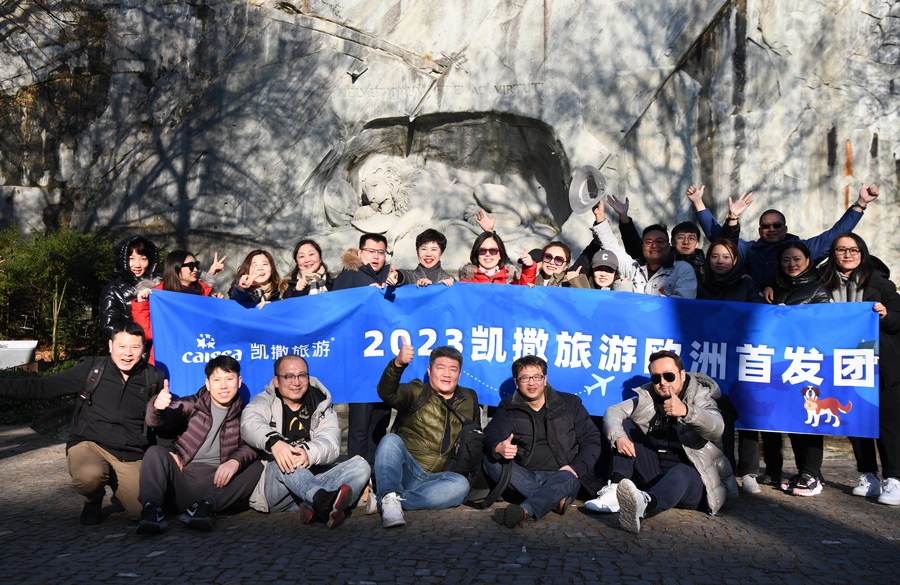[ad_1]

This photo shows a view of Hongyadong scenic area, southwest China’s Chongqing, Aug. 3, 2023. (Xinhua/Liu Chan)
Sutter said: “For a prosperous and unified global economy, we have to make sure that every country and everyone can contribute and participate in building this infrastructure in a relevant and cost-efficient manner.”
GENEVA, Oct. 8 (Xinhua) — As this year marks the 10th anniversary of the Belt and Road Initiative (BRI), Felix Sutter, president of the Swiss-Chinese Chamber of Commerce (SCCC), on Sunday expressed his optimism for the economic cooperation and trade outlook between the two countries.
“It’s a great initiative. When it launched 10 years ago, it was something totally new for the world. It was a revival of century and millennium-old trade corridors and trade routes. The modernization of trade called for a relaunch of these ancient channels,” Felix Sutter told Xinhua in an interview via video link.
“The full realization of the Belt and Road Initiative and its objectives will take decades to achieve. It’s not something that only takes 10 years,” he emphasized.
Proposed by China in 2013, BRI aims to build trade and infrastructure networks connecting Asia with Europe and beyond along the ancient Silk Road trade routes for common development and prosperity.

This photo taken on June 25, 2023 shows the Padma Bridge on the outskirts of Dhaka, Bangladesh. The bridge, which was undertaken by China Railway Major Bridge Engineering Group Co, Ltd. and opened to public in June 2022, ending the history of crossing the mighty Padma river between dozens of districts in southern Bangladesh and the capital of Dhaka only by ferries or boats. (Xinhua)
Pointing out the importance that regional and non-Chinese companies get involved in realizing BRI projects, Sutter said, “For a prosperous and unified global economy, we have to make sure that every country and everyone can contribute and participate in building this infrastructure in a relevant and cost-efficient manner.”
“China plays an important role in the global economy and the Belt and Road Initiative certainly helped, especially in terms of connecting eco hubs and eco centers together,” he said.
Statistics show that from 2013 to 2022, China’s trade in goods with Belt and Road countries increased from 1.04 trillion U.S. dollars to 2.07 trillion U.S. dollars, while two-way investment exceeded 270 billion U.S. dollars.
According to a World Bank research report, by 2030, the BRI will increase trade among participating countries by 2.8 percent to 9.7 percent, global trade by 1.7 percent to 6.2 percent, and global income by 0.7 percent to 2.9 percent.

People visit the booth of a toy company during the East China Fair in Shanghai, east China, July 12, 2023.(Xinhua/Fang Zhe)
Commenting on the Chinese economic outlook, Sutter expressed his optimism, citing China’s big market, advanced technologies and a lot of experienced entrepreneurs as its advantages.
China’s gross domestic product grew 5.5 percent year-on-year in the first half of 2023, according to the Chinese National Bureau of Statistics. The International Monetary Fund forecast in July that China’s economy will grow 5.2 percent this year.
Since 2010, China has been Switzerland’s biggest trading partner in Asia and third largest globally after the European Union and the United States. A bilateral free trade agreement was signed in 2013 and entered into force in July 2014.

Chinese tourists pose for a group photo in front of the city’s landmark Lion Monument in Lucerne, Switzerland, Feb. 13, 2023. (Xinhua/Lian Yi)
Noting that Sino-Swiss economic cooperation is of high quality and well-established in the past 73 years and “the last 30, 40 years have been much more powerful,” Sutter said, “We need entrepreneurs on both sides who talk to each other … so that we can grow further together, and our bridge can get wider and stronger.” ■
[ad_2]
Source link
